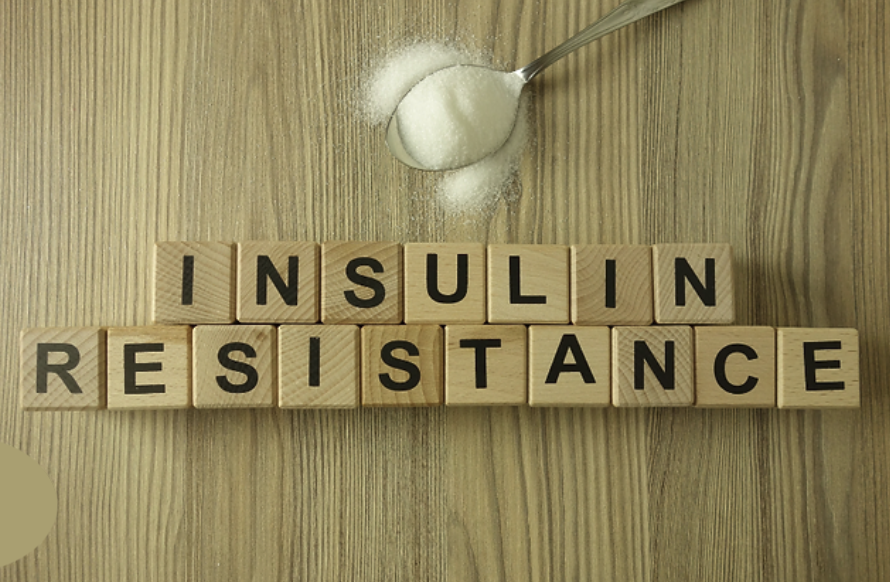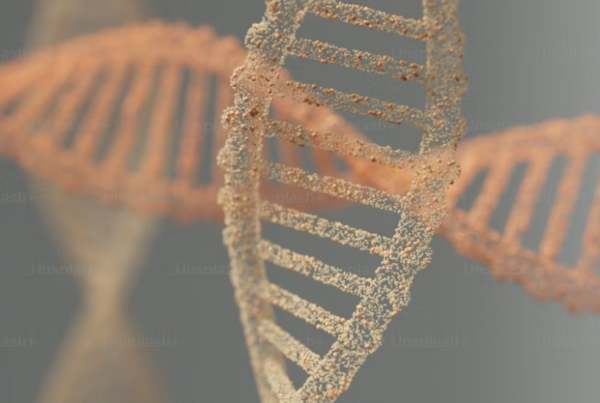Insulin resistance is a hot topic in health circles, as type II obesity and diabetes are in constant rise. The more research advances, the more obvious it appears that many chronic diseases are linked to a metabolic dysfunction. Among it, resistance to insulin is an essential marker that I use quite often, a large number of my clients being affected by this imbalance.
Several clinical signs can put insulin resistance on the track, one that that could easily go unnoticed. Indeed, one can be thin, have normal lab fasting blood sugars, and have resistance to insulin. This is why it is key to check that everything is functioning correctly as insuline resistance increases the risk of type II diabetes and other health problems.

Causes of Insuline Resistance
Insulin is a hormone synthesized by the pancreas in response to an increase in blood sugar levels. The mission of insulin is to reduce blood sugar level by allowing glucose to enter into the cell. In order for glucose to enter the cell, insulin receptors have to work properly, which is not always the case.
A diet rich in carbohydrates and saturated fats, lack of physical activity, lack of membrane fluidity, stress, inflammation are factors that promote insuline resistance.
Consequences of Insuline Resistance
If insulin resistance is not identified and properly addressed, type II diabetes will develop in time. There can be potential other more immediate consequences such as:
- Fatigue
- Inflammation
- Weight gain, increased waist size
- PCOS (Polykistic ovary syndrome) – Acne – Hirsutism in women
- Decrease in libido, cellulite, gynecomastia, risk of prostate cancer in men
- Nash (fatty liver disease)
- High blood pressure
- Cardiovascular risks
Signs of Insuline Resistance
Overweight and obesity are the best known and obvious signs of insuline resistance, but they are not the only ones. Excessive hunger, sweet cravings, sudden fall of energy, acne are also signs that may justify checking if insulin resistance is present.
Biological tests help to validate the presence of insuline resistance -> Homa index, Quicki index, Adiponectin / Leptine ratio.
The Adiponectin/Leptine ratio is is also correlated with the risk of cancer (breast, protaste) and at the risk of metastases. Adiponectin is an anti-cancer hormone, leptin is the opposite, pro-cancer . This adiponectin/leptin ratio helps understanding whether the fat tissues of the body are dangerous, i.e it is in a state of inflammation or not.
Dealing with Insuline Resistance
Dealing with insuline resistance will obviously go through a recommendation encouraging regular physical activity, and dietary recommendations. This does not mean a deprivation of good food, but rather rebalancing the food intakes via a low GI (glycemic index) or low glycemic charge diet, the introduction of more good fats, and fibres. Dietary chronobiology will be another interesting tool. Working on increasing the sensitivity of insulin receptors is also key, as well as promoting the good use of glucose by the cell with, with a micronutritional approach. This strategy needs to be accompanied by the management of inflammation and of stress, en aggravating factor.
I may recommend to use a glucose sensor for a short period of time, to allow assess the glycemic curve throughout the day. This is a great tool not only to see how certain foods or eating habits impact glycemic peaks, but also to motivate to follow food recommendations and movement.
I am at your disposal to discuss this subject further during a consultation, and to assess your risk of resistance to insulin,






